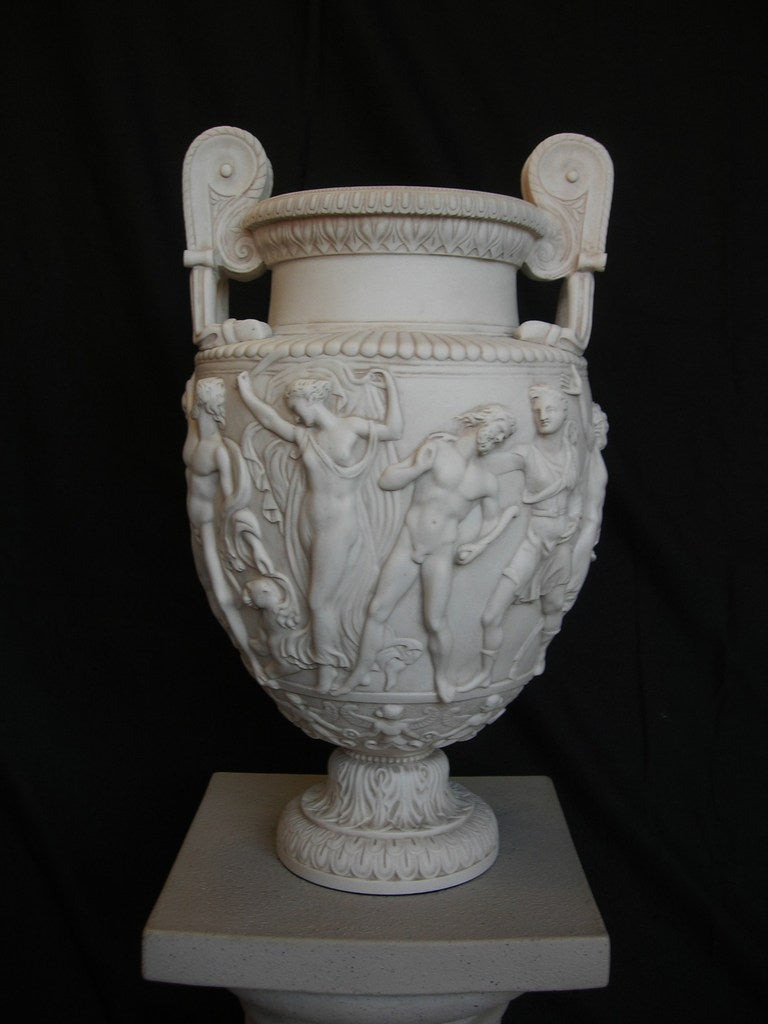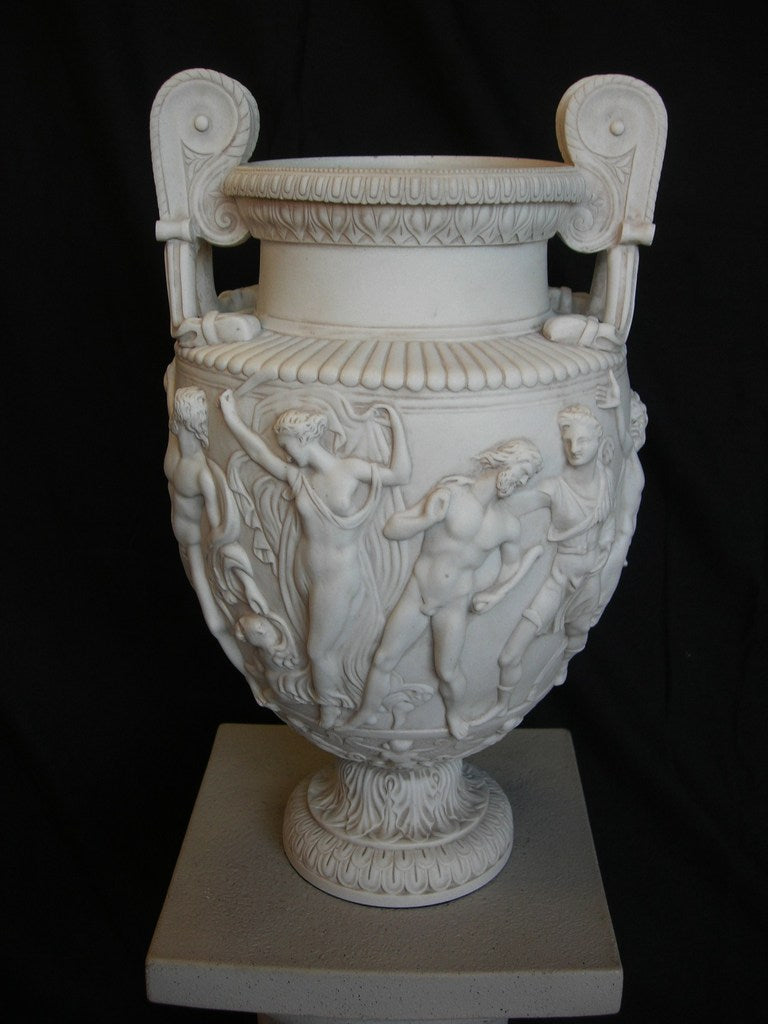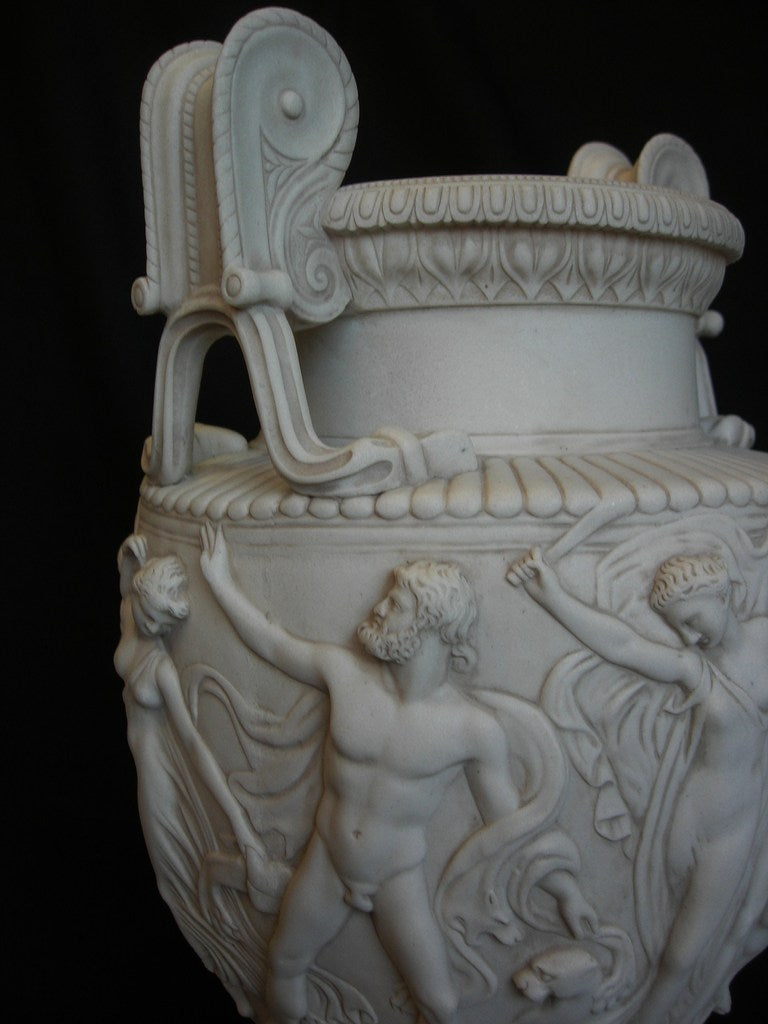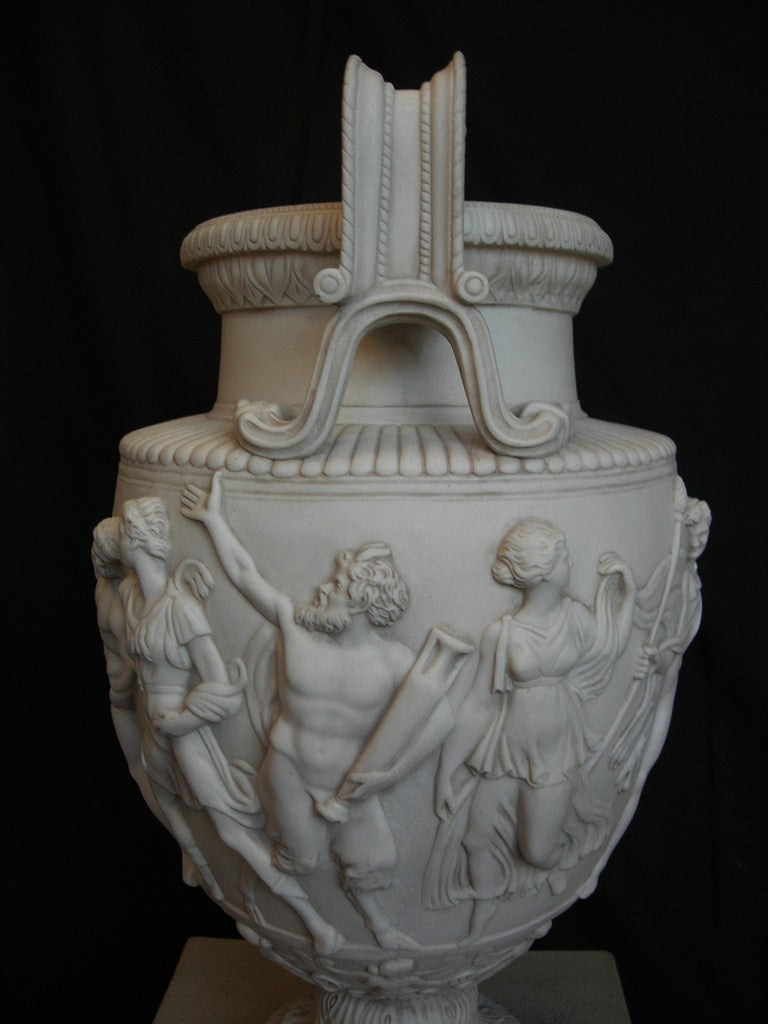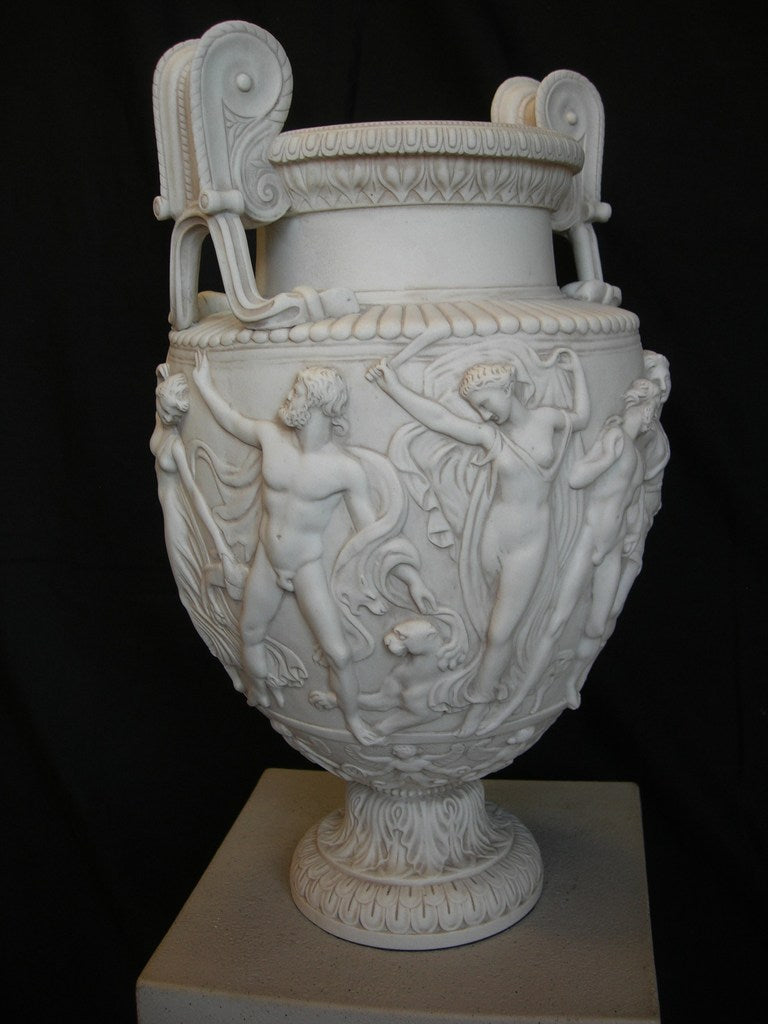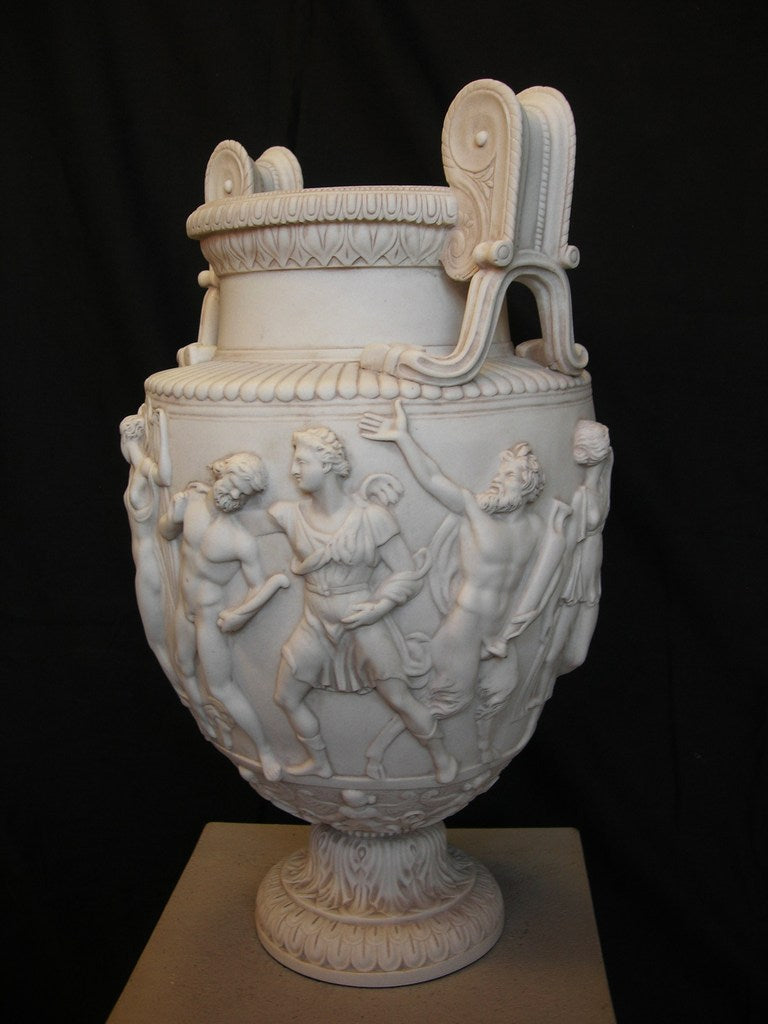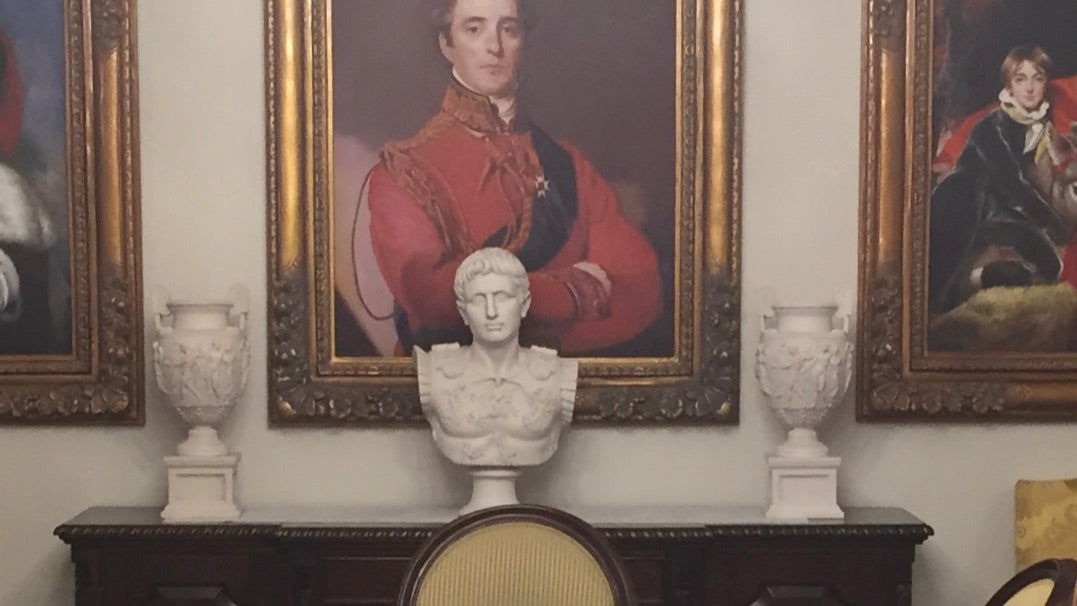Sculptured Arts Studio
Townley Vase lrg
Townley Vase lrg
Couldn't load pickup availability
The Charles Townley vase.
Roman, 2nd century AD
Found at a villa at Monte Cagnolo, near Rome
This marble vase, an adapted form of the Greekvolute-krater, is decorated in high relief with a Bacchic scene, featuring the rustic deity Pan, Bacchus, and both male (satyrs) and female (maenads).
The vase gets its name from the famous collector Charles Townley (AD 1737-1805). Gavin Hamilton, Charles Townley's agent in Italy, describes finding it in numerous fragments together with other sculptures in a large villa at Monte Cagnolo, near Rome, having been '...thrown promiscuously into one room about ten feet under ground'. The vase as you see it today has been reconstructed '...with great attention, as the work deserves.' The restored vase was purchased by Townley for £250 in 1774.
It was once believed that the vase was one of the main inspirations for the Romantic poet John Keats (1795-1821) when he wrote the famous 'Ode on a Grecian Urn'.
What men or gods are these? What maidens loth?
What mad pursuit? What struggle to escape?
What pipes and timbrels? What wild ecstasy?
John Keats, 'Ode on a Grecian Urn' (1819)
Vase Size.
38 cm tall
23 cm wide
